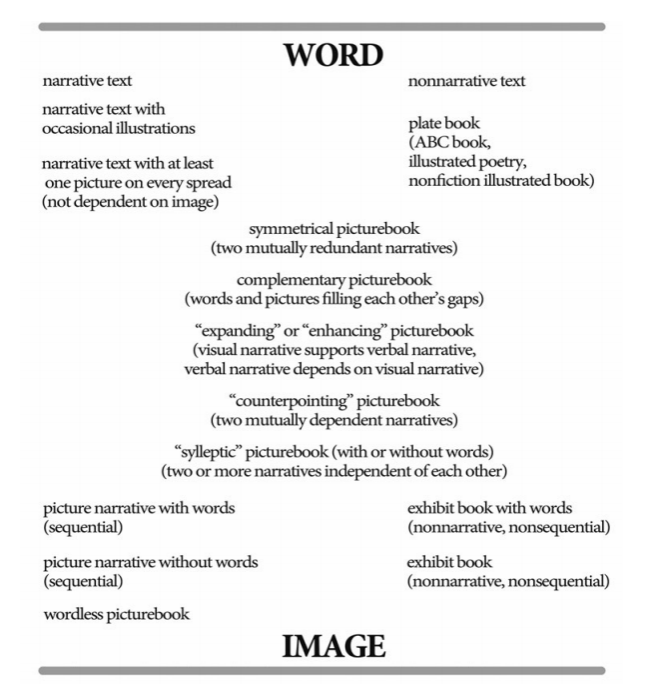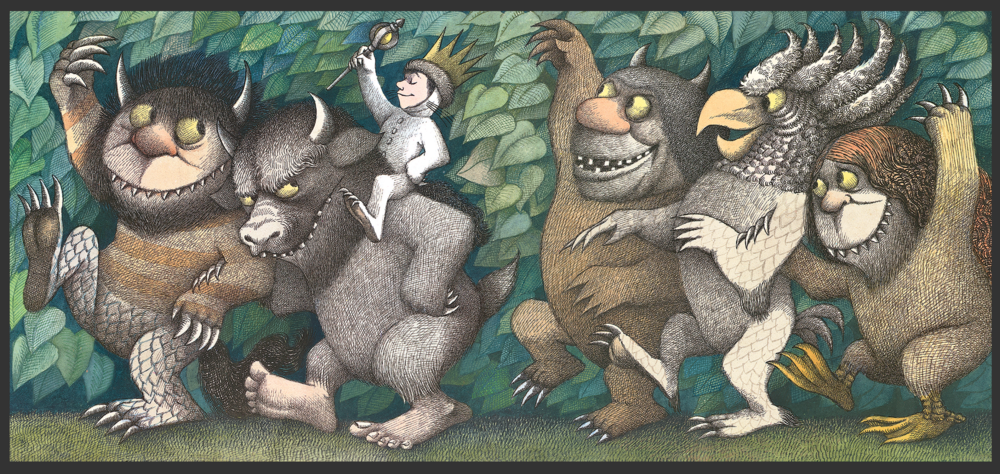Before arriving at the question of images and texts in picture books, I need to propose some other fundamental questions: what is image and text? How do we distinguish between image and text, for example, in pictograph? Is there any clear boundary between both of them?
In the Linguistic Turn, everything can be seen as a ‘text’. Let’s say, culture can also be a text, as can art, religion, consciousness, law, and many others. In this sense, an image can also belong to the text, because an image has a meaning and can be interpreted. Nonetheless, the text remains have different properties compared to the image. (Bateman, 2014).
The properties of text are spelling, grammar, literally meaning, and other linguistic properties. (see Bateman, 2014: 13&17). ‘Text’ usually refers to written and oral communication. (Anderson, 2014). On the other hand, the properties of an image are color, position on the canvas, and line. (Bateman, 2014).
W.J.T. Mitchell, an American theorist of media and literature, emphasizes the meaning of images as likeness. We can find this meaning, for example in religion, in which “man’s creation in the image and likeness of God”. The word “image” that comes from tselem (Hebrew), eikona (Greek), and imaginem (Latin), means an abstract, general, and spiritual “likeness”. (Mitchell, 1986: 31).
W. J.T. Mitchell sees the text as mixed media, in which, writing is a visible representation of speech. Mitchell also calls text “visible language”. (Mitchell, 1994: 109). Writing is a convergence point between seeing and speaking, painting, and printing. The early form of writing, like pictogram, can be an example of this convergence.
According to Mitchell, “writing is the medium in which the interaction of image and text, pictorial and verbal expression”. In this sense, writing makes language visible. (Mitchell, 1994: 113). In fact, there are no clear and distinct boundaries between images and texts, although we can easily identify which one is image and text.
Text and Image Relationship in the Picture Book
Nikolajeva and Scott (2001) create a diagram that categorizes different kinds of picture books. The left side shows narrative artifacts and the right side non-narrative artifacts. The kinds of artifacts were arranged based on their proximity to ‘Words’ at the top and ‘Image’ at the bottom.
The central diagram displays possible text and image relationships in picture books. Five picture book possibilities are: symmetrical picture books, complementary picture books, expanding and enhancing picture books, counterpointing picture books, and sylleptic picture books. (Bateman, 2014: 75).

Fang (1996) argues that pictures serve some functions in picture books, which are: establishing the setting, defining and developing characters, extending or developing the plot, providing different viewpoints, contributing to textual coherence, and reinforcing the text.
For example, a visual narrative provides information about “the story’s time and place, creates a mood, clarifies historical background, shows an antagonist, or emphasizes symbolic meaning”. Different historical periods and cultures often appear in visual rather than textual narratives. (Fang, 1996: 131).
The visual narrative also can define and develop characters. For instance, the visual illustrations sometimes show the characters’ actions and reactions to one another or give certain features, such as an evil figure that was depicted with a devil’s horn, fangs, or a tail to denote its cruelty. (Fang, 1996:132)

